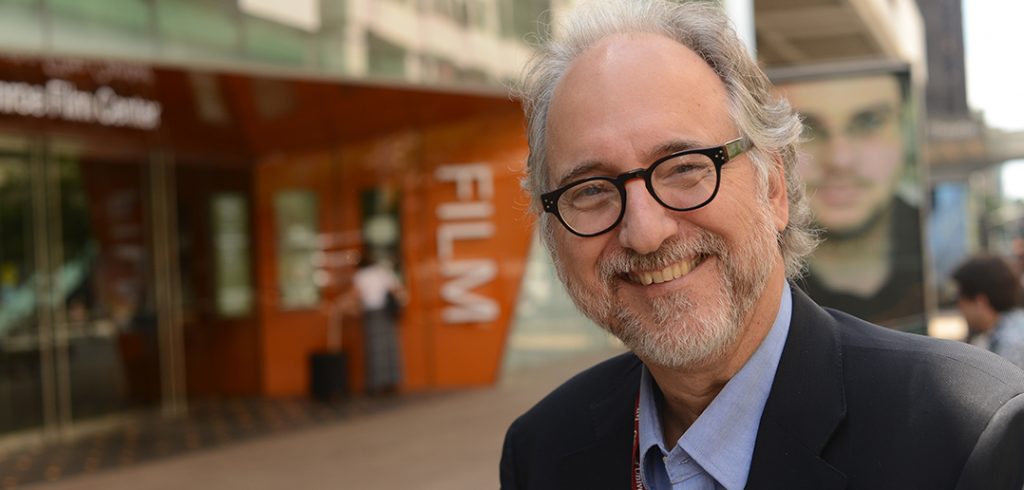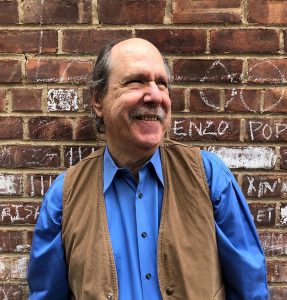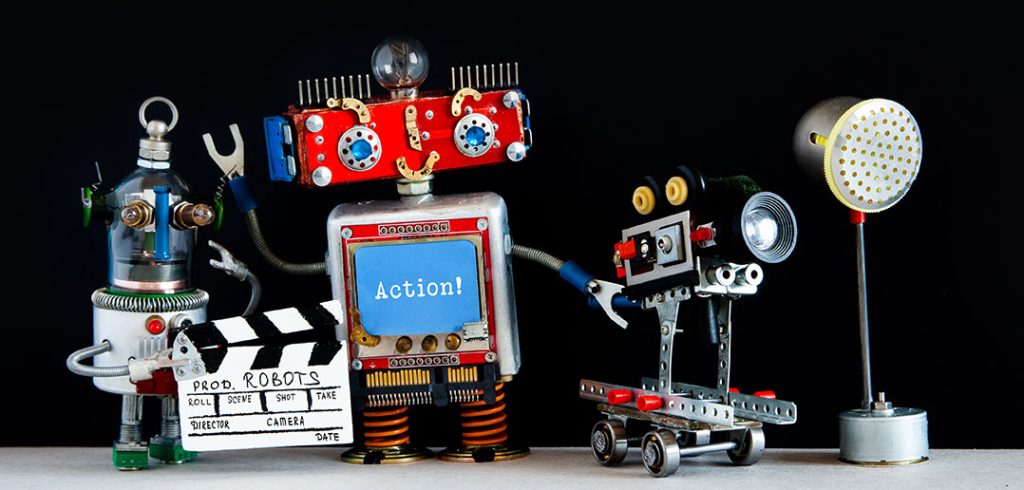When the Writers Guild of America went on strike over the summer of 2023, one of their major grievances was the use of AI in television and movies.
A recent presentation at Fordham’s cybersecurity conference last month helped illustrate why.
“When I asked the CEO of a major movie company recently, ‘What’s the craziest thing you can imagine will happen in the next two to three years?’ he said, ‘We will have a full cinematic feature starring zero actors, zero cinematography, zero lighting, and zero set design,” said Josh Wolfe, co-founder and managing director of Lux Capital at a keynote speech on Jan. 10.
“It will all be generated.”
As an example, Wolfe, whose firm invests in new technologies, screened a fan-made movie trailer that used AI to imagine what Star Wars would look like if it had been directed by Wes Anderson.
A Threat to Storytelling

James Jennewein, a senior lecturer in Fordham’s Department of Communication and Media Studies whose film-producing credits include Major League II, Getting Even with Dad, and Stay Tuned, said the prospect of AI-powered screenwriting is deeply concerning.
He called storytelling “soul nourishment” that teaches us what it means to be human.
“We’re still watching films and reading books from people who died centuries ago, and there’s something magical about an artist digging into their soul to find some kind of truth or find a unique way to express an old truth, to represent it to the culture, and I don’t think that AI is going to help make that happen more,” he said.
In many ways, AI has already infiltrated movies and TV; major crowd scenes in the show Ted Lasso were created using AI tools, for example. This summer, the directors of Indiana Jones and the Dial of Destiny used AI to render the nearly 80-year-old Harrison Ford to look like he was in his 20s.
The ability to use fewer actors in a crowd scene is obviously concerning to actors, but Jennewein said the strike was about more than just saving jobs–it’s about protecting creativity.
“We don’t want AI to create the illusion that something is original when it really is just a mashup of things that have been created before,” he said.
“Flesh-and-Blood” Films Coexisting with AI
Paul Levinson, Ph.D., a professor of communications, saw first-hand what AI can do to his own image and voice. A 2010 interview he did was recently altered by the journalist who conducted it to appear as if Levinson was speaking in Hindi. But he is less concerned about AI taking over the industry.
He noted that when The Birth of a Nation was first screened in 1915, it was predicted that it would kill off the live theater.

Levinson predicted that in the future, the majority of what we watch will be AI-generated, but there will still be films that are made with live human actors. Just as theater co-exists with live movies, traditional movies will co-exist with AI content.
“I think we are going eventually to evolve into a situation where people aren’t going to care that much about whether or not it’s an AI-generated image or a real person,” he said.
Levinson acknowledged that AI could inflict real harm on the livelihood of actors and screenwriters, but said an equally important concern is whether those who work with AI tools get the credit they deserve.
“I’m sure people are going to think I’m out of my mind, but I don’t see a difference, ultimately, between a director who is directing actors in person and somebody who understands a sophisticated AI program well enough to be able to put together a feature-length movie,” he said.
“What could ultimately happen as AI-made films become more popular, is that films that are made with real flesh-and-blood actors will advertise themselves as such, and they’ll try to do things that maybe AI can’t quite yet do, just to push the envelope.”


